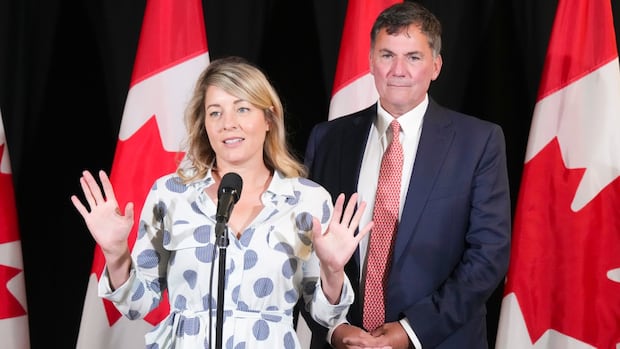Confused by Trump’s many tariff threats? Here’s what’s going on
Navigating through the maze of U.S. President Donald Trump’s ever-changing tariff plans can feel like being lost in a funhouse. The constant back and forth of imposing tariffs, delaying them, and then threatening more targeted tariffs can leave anyone feeling confused. But, in reality, this confusion is not a flaw – it’s proof that you’re paying attention to the intricate web of Trump’s trade threats.
Trump has made a plethora of tariff threats, creating an endless stream of economic uncertainty. He often mixes these threats together, making it difficult to decipher his intentions. It then falls on his aides to clarify the situation, adding to the chaos and confusion. This intentional ambiguity is part of Trump’s strategy to keep his opponents off balance.
For Canada, this uncertainty poses several challenges. Firstly, it’s unclear whether a massive economy-wide tariff of 25 per cent will be imposed on March 4 or at all. Secondly, Canada faces the looming threat of tariffs on steel, aluminum, and potentially other products in the coming weeks. Lastly, this confusion may be a deliberate tactic as the renegotiation of the Canada-U.S.-Mexico agreement approaches.
The fear and uncertainty created by Trump’s trade policy have already started to impact companies, with some shifting production to the U.S. This chaos is not a mistake but a deliberate feature of Trump’s strategy. As trade experts predict various outcomes, the only certainty is that more turbulence lies ahead.
The looming threat of a 25 per cent tariff on virtually everything on March 4 has been repeatedly postponed by Trump. While some experts foresee another delay, others predict some form of action next week, albeit at a lower rate. The uncertainty surrounding these tariffs adds to the anxiety in Canada, with the potential for a severe economic downturn if implemented.
The promise of 25 per cent tariffs on steel and aluminum imports also poses a significant challenge for Canada. While Trump is adamant about bringing manufacturing back to the U.S., the extent of the tariffs’ impact remains unclear. The ambiguity surrounding the scope of these tariffs keeps experts awake at night, with the potential for a disruptive spring ahead.
Beyond April 1, Trump’s trade policy takes a more aggressive turn, with threats of reciprocal tariffs, auto tariffs, semiconductor tariffs, and more. As the renegotiation of the Canada-U.S.-Mexico agreement looms, Trump will likely use these tariffs as leverage to push for concessions. Canada’s traditional strategy of delay may not work this time, as Trump wields the threat of tariffs and a potential withdrawal from the trade agreement.
In conclusion, the confusion surrounding Trump’s tariff plans is intentional and part of his negotiation strategy. As Canada braces for potential tariffs and a tumultuous spring, the only certainty is that uncertainty will continue to shape the future of international trade.




